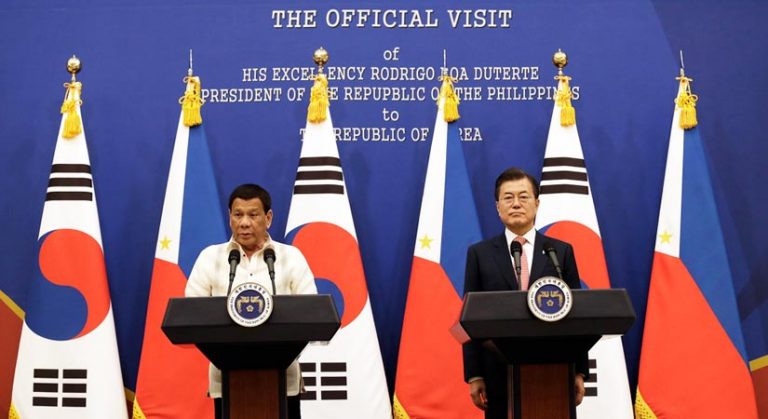
(Eagle News) — President Rodrigo Duterte’s visit to South Korea has yielded $4.9 billion worth of investments, Presidential Spokesperson Harry Roque said on Tuesday, June 5.
He said the amount was apart from the $1 billion worth of Official Development Assistance which the Philippines was slated to receive for the Build, Build, Build projects of the government.
The government said among the projects in the pipeline under the ODA are the $50-million project preparation facility for the National Irrigation Administration (NIA); $100-million financing for the New Dumaguete Airport Development Project; and $41 million for the implementation of the Electronic Receipt Invoices and Sales Reporting System.
The Philippines and South Korea also signed five government-to-government agreements.
These include a Memorandum of Understanding on Scientific and Technological Cooperation between the Department of Science and Technology (DOST) of the Philippines and the Ministry of Science and ICT of the Republic of Korea; a Memorandum of Understanding between the Department of Trade and Industry (DTI) of the Philippines and the Ministry of Trade, Industry and Energy (MOTIE) on Trade and Economic Cooperation; a Memorandum of Understanding for Cooperation on the Expansion of Renewable Energy Deployment between the Department of National Defense (DND) of the Philippines and the Ministry of Trade, Industry and Energy (MOTIE) of Korea; a Memorandum of Understanding between the Department of Transportation (DOTr) of the Philippines and the Ministry of Land, Infrastructure and Transport (MOLIT) of Korea Concerning Cooperation in the Field of Transport; and a Loan Agreement on the New Cebu International Container Port Project between the Government of Republic of the Philippines and the Export-Import Bank of Korea.
Trade Secretary Ramon Lopez said that 23 business-to-business (B2B) deals amounting to $4.8 billion and that are expected to generate around 50,000 jobs will also be signed on Tuesday, June 5.
“Naririyan iyong pangako na hahanapan ng paraan para mas makapasok pa iyong mga produkto natin sa South Korea sa mas mababang taripa,” Roque added.
Lopez said these products include bananas, pineapples, mangoes, and coconuts.
“We are the largest supplier of banana to South Korea but our market share is also challenged by other suppliers. This is because the tariff rates still have room for reduction,” Lopez said. With PNA report







